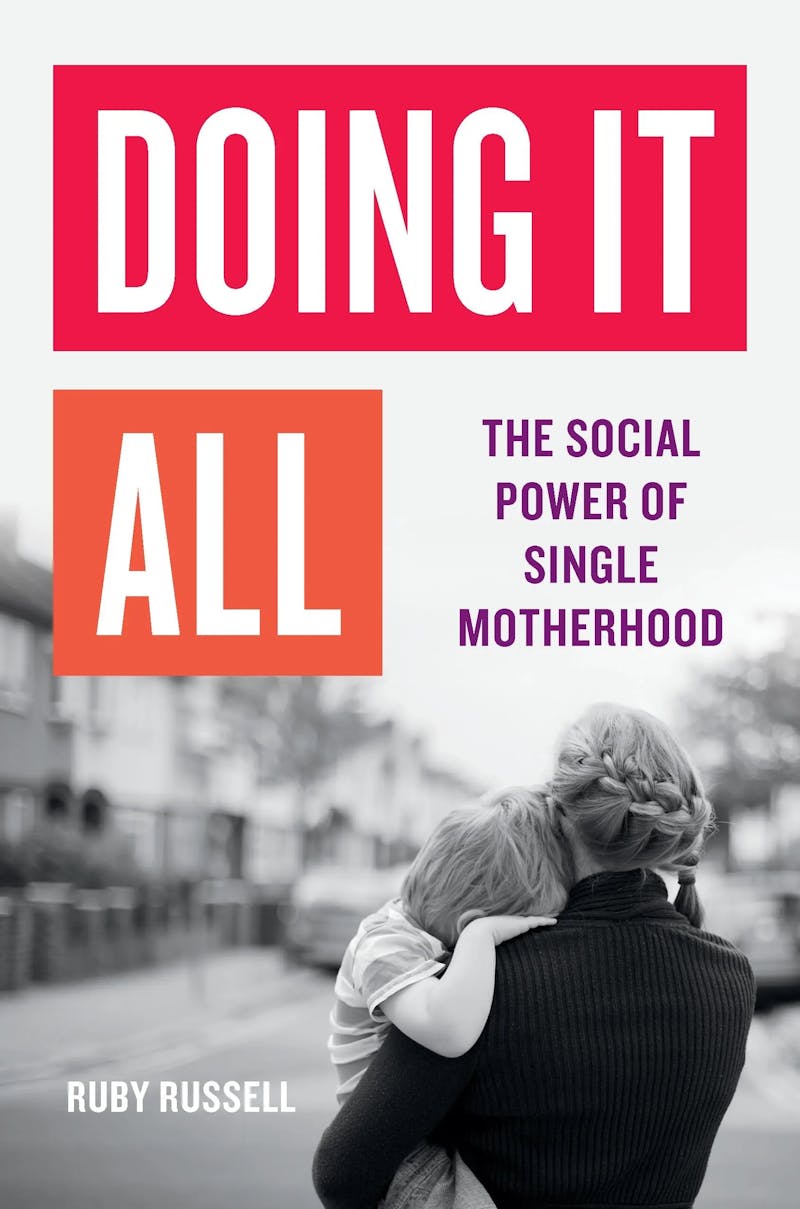In 1918, Jessie Ashley, a feminist lawyer from a genteel New York family, mused on the end of the nuclear family. “I think it—the family—has been necessary and a good thing,” she wrote in a letter to a friend; “I don’t regard it as a disease, but only an evolution like all the rest of institutions, private property and the rest, but I think as our economic system changes, the family will inevitably disappear too and personally, I think that is desirable.” Though the term nuclear family wouldn’t appear until 1924, coined by anthropologist Bronislaw Malinowski, its cultural status was already up for critique.
A century later, the nuclear family’s demise is being foretold all over again, if publishing is any indication. Recent books on polyamory and reimagining the household unit, alongside this past Valentine’s Day’s cluster of post-marriage memoirs, argue it’s time to transform the family unit into something more equitable, flexible, and engaged with the wider world.


But there are penalties to remaking the old, rom-com-approved mold. Single mothers, specifically, face legal, financial, and even medical disadvantages: a fact both cruel and bizarre, considering that in 2023, nearly a quarter of the child population lived with a single parent. The United States has one of the highest single-parent-household rates in the world, and at least 2.7 million of those households are headed by single mothers by choice. Yet, as Ruby Russell writes in Doing It All, “tax regimes, benefits, the welfare state, schools, working hours, conferences, dinner parties, parents’ evenings, mortgages, family discounts, package holidays—and anyone who asks you to do anything outside school hours—operate on the assumption of a two-parent norm that scarcely exists even in two-parent families.”
How did that come to be, and what should we build instead? Russell’s Doing It All and Valerie Bauman’s new book Inconceivable investigate the perils, possibilities, and social power of single parenthood, braiding together memoir, reportage, and manifesto. Taken together, these two books propose that we quit idealizing the married-with-kids configuration and overhaul the single-parent household’s cultural status.
In Inconceivable, Bauman, an investigative reporter at Newsweek, pursues solo motherhood for herself. We follow her as she considers sperm donors, forges connections with other single parents by choice, and endures the physical and emotional ordeal of fertility treatments. The result is a heavyweight quest narrative buoyed by its author’s relentless curiosity, studded with gemlike considerations of the evolution of the single-mother-by-choice phenomenon and the technologies that made it possible.
The desire to have a baby has been compared, dismissively, to a fever. Bauman feels an overwhelming urge to nurture a child of her own, but she doesn’t give in to it without first interrogating herself and her dreams. Ultimately, she wants her child to have the option of contacting their other biological parent; since her chances of this are higher outside the sperm-bank industry, she sets out to become an expert on the freelance sperm market. She tries various methods of connecting with donors, such as the Just a Baby app, and compiles lists of questions to ask prospective donors and to research herself.
An ethical minefield lies ahead. What if, as a single mother by choice, she dies? What if her sperm donor sues for custody? Or—and this is less outlandish than one might think—what if it turns out her donor has fathered hundreds of other children, and her child accidentally forms an incestuous relationship with one of them? The apps promise a seamless (and Seamless-style) access to sperm, but reality is more jarring. Describing the weirdness of trying to inseminate herself during the early months of Covid, Bauman writes of herself and a donor, “We were preparing to exchange bodily fluids, yet we hadn’t really even seen each other’s faces.”
While Bauman is trying to conceive, days lose their meaning apart from where they are in relation to ovulation, possible fertilization, and whether it’s too soon to take a pregnancy test. “I was tired of being in my own brain,” Bauman writes. “All I could think about was having a baby, where I was in my cycle, and how my cervical fluid was looking.”
Her hopes for the future are wrapped up in the dream of having a child, despite her devotion to her work and efforts to keep up a social and dating life. Once a donor match has been secured, her remaining options are natural insemination (N.I., or sex), artificial insemination (intrauterine insemination, or IUI, at the doctor’s office or the so-called “turkey baster” method at home), and in vitro fertilization. Toward the book’s conclusion, as Bauman shifts from IUI to IVF, the reader, like the narrator, begins to feel pumped full of hormones and vulnerability, grimly realistic yet holding on to what hope remains.
In one of Inconceivable’s most indelible episodes, the narrative flashes back to 1884 and the first recorded case of artificial insemination by donor. A childless couple applied to Dr. William Pancoast of Philadelphia for help; unbeknownst to the wife, the husband had been rendered infertile by gonorrhea. The sympathetic doctor sedated the wife and injected her with a stranger’s sperm before an audience of medical students. After she became pregnant, her husband and the doctor agreed there was no need to inform her of the full circumstances.
The truth finally broke out when one of the witnesses published a letter about it 25 years later. It’s a chilling story, and, unfortunately, it helps make sense of Bauman’s experiences seeking medical support. Because Bauman is single, for instance, her doctor refuses to prescribe her standard fertility medications and procedures until she undergoes (and pays for) a psychiatric evaluation not required of partnered patients. Naturally, and with flair, she fabricates a relationship to keep her doctor happy and helpful. Among her impersonal and consistently patronizing clinicians, Bauman is treated partly like a walking uterus and otherwise like a demanding, not too bright customer.
If Inconceivable has a touch of Carrie Bradshaw (“Meanwhile, I was still hitting snooze on my biological clock”), Doing It All draws on feminist philosophers like Margaret Drabble, Adrienne Rich, Marguerite Duras, Maggie Nelson, and Linda Gordon. Russell’s book opens with her surprise pregnancy and follows her experience of single parenting far from family support or a financial cushion, in chapters that telescope from incident to data, analysis, polemic, and ideas for a better future. Single parenthood for someone in Russell’s circumstances is an ever-replenishing cocktail of isolation, overwork, and the sense of doing everything badly despite herculean efforts. Yet over the course of Doing It All, Russell, a British journalist living in Berlin, finds gleams of hope for the future in the mutual-support networks she cultivates with other single-parent families.
The most confessional stretches of Doing It All come near the beginning, when Russell discovers she’s pregnant. In her mid-twenties, a doctor had told her that she was probably infertile. Years afterward, the positive test rocks her, before the surprise resolves into a tentative, tender determination to make it work with the baby’s father. At this stage she feels that, in a way, she’s succeeded in the realm of societal expectations. “It’s almost unseemly to talk about settling and starting a family before you’re thirty,” Russell writes, yet “close to failure if you’re not cradling an infant by the time you’re thirty-five.”
The couple separates during their child’s early years, and from that point onward, Russell grapples with being the primary parent while trying to make a fulfilling life in a society that has labeled her family structure as second-rate, even threatening. A family unit with a lone woman at the head, instead of a man, has long been viewed with suspicion by the family law system, even as it has become normalized in culture and reality. Russell’s writing on the problematic legal conception of the “best interests of the child”—as in custody decisions that default to 50–50 regardless of evidence of domestic abuse, as in Kentucky, Germany, and Greece—inspires righteous rage.
She clearly delineates how much of the U.S. government’s suspicion of single motherhood is linked to undisguised racism: the infamous 1965 Moynihan Report commissioned by the Johnson administration (actually titled “The Negro Family”) used “matriarchal” as a slur, calling the Black family a “tangle of pathology” characterized by “divorce, separation, and desertion, female family head, children in broken homes, and illegitimacy.”
That perspective persisted over the following three decades. In 1992 an aggrieved Dan Quayle blamed the Los Angeles riots on the breakdown of the nuclear family, bemoaning that Murphy Brown, a single-mother TV character played by Candice Bergen, “mock[ed] the importance of fathers by bearing a child alone,” and a couple of years later Bill Clinton’s welfare overhaul, Russell writes, “aggressively promoted the nuclear family, giving stated financial incentives to reduce births outside marriage.”
Single mothers have thus been denigrated, investigated, and marked as inadequate as both workers and parents. Recent data continues to show that children from two-parent households have measurably better outcomes in terms of educational achievement, earnings, and even behavioral stability—but is this surprising, given that two-parent households have the financial advantage of double the adults collaborating on the project of raising a family, plus the cachet of representing a cultural ideal?
“Society says mothers must always put their children first,” Russell writes, “but the welfare state insists they prioritize getting back into paid work above all else.” From her research as well as personal experience, she’s seen how single mothers are gaslit, enduring scrutiny from doctors, social work providers, and their children’s educators over whether they’re “coping,” a seemingly well-meaning concern that implies children might be better off with foster parents—strangers, though married and state-approved—than with their single mothers. As she writes, giving ample and horrifying evidence, Child Protective Services “has become for Black women what the criminal justice system is for Black men.”
The empowerment of the nonnuclear family springs from the internet, and specifically the internet’s capacity to connect disparate individuals into a movement. For both Bauman and Russell, Facebook groups are a lifeline. Bauman is seeking not just sperm but also a way to build solidarity with single mothers by choice who are at various stages in the process (“thinkers,” “triers,” and moms). When Bauman organizes a backyard gathering for “triers,” she solidifies her friendship with seven comrades: “all intelligent, hardworking professionals who hadn’t found love and partnership yet refused to give up on their dreams of motherhood.” Russell, meanwhile, turns her online connections into an IRL support circle: “We share tips for navigating bureaucracy, family courts and fertility clinics, pass on children’s clothes and freezer bags of breast milk, turn to one another with parenting dilemmas and exchange recommendations for vibrators and dating apps.” When Russell’s Facebook group gathers for a Mother’s Day celebration, they remake the tradition, topping up one another’s glasses and agreeing to pitch in with childcare during one another’s court hearings, exams, and medical appointments—mutual aid with a generous helping of joy.
Russell’s ambitions don’t end with creating a slightly more supportive life for herself and her child. Doing It All calls for systemic solutions. The book proposes a reimagining of working hours and norms, a welfare state that doesn’t discriminate against single mothers, more equitable and sensitive custody management, plus the game changer: universal basic income to narrow the resource gap between two-parent and single-parent families.
Russell’s self-made mini-society and proposals for a more just future call to mind an early twentieth-century feminist utopian novel, Charlotte Perkins Gilman’s Herland (1915). In Gilman’s vision, society is all-female: Reproduction happens parthenogenetically, and only daughters are born. Mothering is not isolated to individual bio-parents and their offspring, but a major guiding force for society, where every child’s well-being is the equal concern of every adult. Childcare is a collective and fully professionalized undertaking. It’s a socialist ideal, where capitalistic competition has been abandoned in favor of a cooperative, communal state. (It also weaves in pro-eugenics sentiment: Only the most gifted of the women are allowed to bear more than one child.)
Doing It All echoes Gilman in arguing for a more expansive definition of mother: Russell writes of “othermothers” and “alloparents,” referring to anthropological research about the Hadza, in Tanzania, where grandmothers care for grandchildren while taking an important role in sourcing food, and the Yanomami of Brazil and Venezuela, where children have about a one-in-three probability of living with both parents by the time they are 10. (After that point daughters stay close to their mothers, while sons are raised by male members of the group.) Real-life intentional communities that include collectivized childcare do exist closer to Berlin, of course. Though Russell’s mutual support network is a powerful model and her arguments are well crafted, it would have been interesting to see her visit a functioning commune or kibbutz, or to interview single parents who moved into an intentional community specifically for better childcare support.
Both books aim a spotlight on the legal and cultural forces that shape our ideals of what a family looks like, and of what is best for children. Laws that forbid a divorce from being finalized if one party is pregnant, with no exception for domestic violence, can force a two-parent household to persist even under brutal circumstances (currently these exist in Missouri, Florida, Mississippi, Arizona, and Arkansas). Restrictions on IVF, which makes pregnancy possible for many queer and single people, send a message that technological progress can be cast as the enemy of the ideal family, instead of its enabler.
Jessie Ashley, who anticipated the end of the nuclear family household in 1918, never saw whether her predictions had any reality in them; she died a year after writing that letter. Bauman and Russell show how those century-old ideas are at the center of today’s movement to reconfigure the “default” family unit. Arguably, it’s long past time we accepted that a child’s well-being has more to do with the dedication and well-being of its caregivers than the number of adults in the household or their relationship to each other.
“A baby’s world is an opening web of human connection,” Russell writes toward the end of Doing It All, a lovely and true way of characterizing how each new child subtly, or sometimes drastically, reorganizes the constellations of caregivers and siblings around them—constellations that can be mapped and trusted, even if they don’t conform to a preordained pattern.






